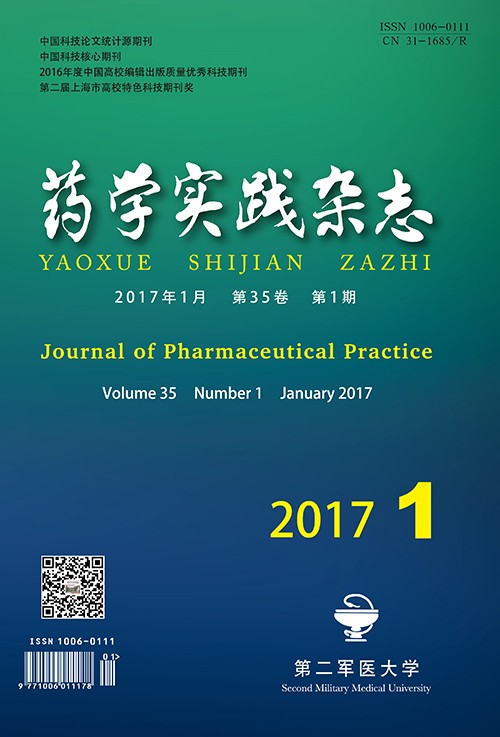|
[1]
|
黄以钟. 福建药用植物板蓝与建青黛的研究. 福州:福建农林大学,2009. |
|
[2]
|
王英, 沙飞,陈月华, 等. 靛玉红及其类似物抗肿瘤和神经保护作用的研究进展[J]. 中草药, 2014,45(16):2404-2411. |
|
[3]
|
Nam S,Buettner R,Turkson J,et al.Indirubin derivatives inhibit Stat3 signaling and induce apoptosis in human cancer cells[J].Proc Natl Acad Sci USA,2005,102(17):5998-6003. |
|
[4]
|
Hoessel R, Leclerc S, Endicott JA, et al. Indirubin, the active constituent of a Chinese antileukaemia medicine, inhibits cyclin-dependent kinases[J]. Nat Cell Biol, 1999,1(1):60-67. |
|
[5]
|
Vougogiannopoulou K, Skaltsounis AL. From Tyrian purple to kinase modulators:naturally halogenated indirubins and synthetic analogues[J]. Planta Med, 2012,78(14):1515-1528. |
|
[6]
|
Wang L, Zhou GB, Liu P, et al. Dissection of mechanisms of Chinese medicinal formula Realgar-Indigo naturalis as an effective treatment for promyelocytic leukemia[J]. Proc Natl Acad Sci USA, 2008,105(12):4826-4831. |
|
[7]
|
国家药典委员会. 中华人民共和国药典2015年版一部[S]. 北京:中国医药科技出版社, 2015:199. |
|
[8]
|
李园园, 方建国, 王文清, 等. 大青叶历史考证及现代研究进展[J]. 中草药, 2005,36(11):1750-1753. |
|
[9]
|
刘泽玉, 苏柘僮, 杨明, 等. 青黛炮制过程中靛蓝定向生成的工艺设计与优化[J]. 中草药, 2011, 42(1):56-60. |
|
[10]
|
李广华, 赵文法, 王蕴, 等. 药用青黛的质量考察[J]. 中国药事, 2009, 23(5):472-473. |
|
[11]
|
黄以钟, 潘大仁, 王占成, 等. 不同生长时期对马蓝药效成分的影响[J]. 中国农学通报, 2009, 25(16):75-78. |
|
[12]
|
黄璐琦, 戴住波, 吕冬梅, 等. 探讨道地药材研究的模式生物及模型[J]. 中国中药杂志, 2009, 34(9):1063-1066. |
|
[13]
|
胡世林. 中国道地药材原色图说[M]. 济南:山东科学技术出版社, 1998:86-87. |
|
[14]
|
普吴, 孙星衍, 孙冯翼. 神农本草经[M]. 北京:人民卫生出版社, 1984:25. |
|
[15]
|
李时珍. 本草纲目[M]. 北京:人民卫生出版社, 1985:1085-1086. |
|
[16]
|
胡嘉琪, 崔鸿宾, 张玉龙. 国产爵床科芦莉花族植物的花粉形态[J]. 植物分类学报, 2005, 43(2):123-150. |
|
[17]
|
中国科学院中国植物志编辑委员会. 中国植物志[M]. 北京:科学出版社, 2002:128-150. |
|
[18]
|
福建植物志编写组. 福建植物志[M]. 福州:科学出版社, 1989:132-133. |
|
[19]
|
李洪光. 药用植物马蓝和枳的遗传多样性分析研究[D]. 福州:福建农林大学, 2010. |
|
[20]
|
杨成梓, 刘小芬, 范世明. 药用植物马蓝的资源调查研究[J]. 中国现代中药, 2012, 14(3):33-35. |
|
[21]
|
朱仁磊. 福建马蓝资源化学及其水分生理学研究[D]. 福州:福建农林大学, 2011. |
|
[22]
|
张丹雁, 林秀旎, 陈晓庆, 等. 南板蓝(马蓝)驯育栽培技术研究[J]. 现代中药研究与实践, 2010, 24(2):18-19. |
|
[23]
|
张旭, 何明辉, 魏成熙. 贵州省道地药材南板蓝根引种栽培研究[J]. 安徽农业科学, 2010, 38(33):18730-18731. |
|
[24]
|
杜沛欣. 马蓝GAP规范化种植研究进展[J]. 海峡药学, 2011, 23(8):57-59. |
|
[25]
|
张英娇, 魏道智, 宁书菊, 等. 氮磷钾对马蓝营养生长与叶片有效成分含量的影响[J]. 中国中药杂志, 2009, 34(10):1299-1301. |
|
[26]
|
魏世勇, 张旭, 魏成熙. 南板蓝的营养特性及栽培技术[J]. 山地农业生物学报, 2003, 22(6):493-498. |
|
[27]
|
陈瑞芳, 刘颖嘉, 程习梅, 等. 马蓝光合特性研究[J]. 福建农林大学学报(自然科学版), 2014, 43(3):225-229. |
|
[28]
|
宁书菊, 张英娇, 林建勇, 等. 光强对福建马蓝光合特性的影响[J]. 中国生态农业学报, 2012, 20(7):901-908. |
|
[29]
|
覃军, 陈奕龙, 张丹雁, 等. 不同光照条件对南大青叶(马蓝叶)中靛玉红含量的影响[J]. 安徽农业科学, 2014, 42(1):59-60. |
|
[30]
|
魏道智, 林文雄, 陈慧, 等. 福建马蓝的种苗繁殖与栽培[C].第六届全国药用植物和植物药学术研讨会论文集.长春,2006, 127-129. |
|
[31]
|
崔红艳, 方子森, 牛俊义. 胡麻栽培技术的研究进展[J]. 中国农学通报, 2014, 30(18):8-13. |
|
[32]
|
龙菊生, 聂垚. 林下套种马蓝(山蓝)技术[J]. 现代园艺, 2013,(3):28. |
|
[33]
|
蔡益航, 吴建宇. 枇杷园套种青黛高产栽培技术[J]. 现代农业科技, 2013,(19):103-105. |
|
[34]
|
张丽梅, 陈菁瑛, 陈熹. 马蓝未成熟种子的组织培养[J]. 植物生理学通讯, 2007, 43(3):521. |
|
[35]
|
孙云玲, 姚洪源, 田华林, 等. 马蓝组培快繁技术研究[J]. 现代农业科技, 2010,(9):102-103. |
|
[36]
|
朱永宏, 李学敏, 韩宝玲. RAPD技术在中药材鉴定中的应用进展[J]. 中草药, 2007, 38(9):1443-1444. |
|
[37]
|
黄玉吉, 陈菁瑛. 马蓝种质资源的RAPD分析[J]. 中药材, 2010, 33(2):183-186. |
|
[38]
|
于英君, 肖井仁, 姜颖, 等. 菘蓝和马蓝基因组DNA RAPD指纹图谱的建立[J]. 中医药学报, 2013, 41(6):26-27. |
|
[39]
|
向小亮, 宁书菊, 黄延龄, 等. 外源水杨酸对马蓝叶片中蛋白水平表达的影响[J]. 应用生态学报, 2010, 21(3):689-693. |
|
[40]
|
龚小贵. 不同浓度茉莉酸甲酯对马蓝生理与蛋白质的影响[D]. 福州:福建农林大学, 2011. |
|
[41]
|
Marcinek H, Weyler W, Deus-Neumann B, et al. Indoxyl-UDPG-glucosyltransferase from Baphicacanthus cusia[J]. Phytochemistry, 2000,53(2):201-207. |







 DownLoad:
DownLoad: